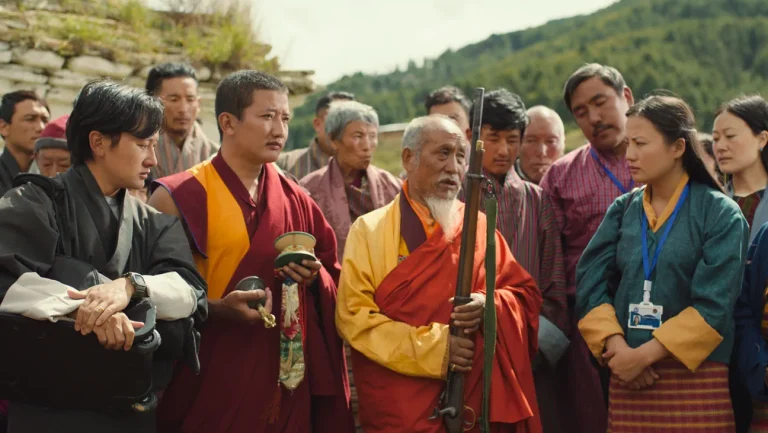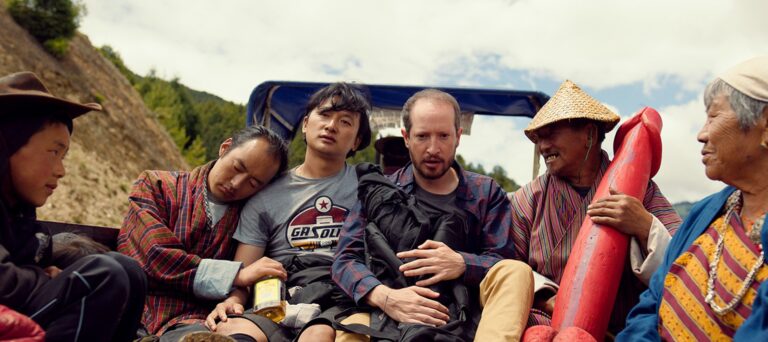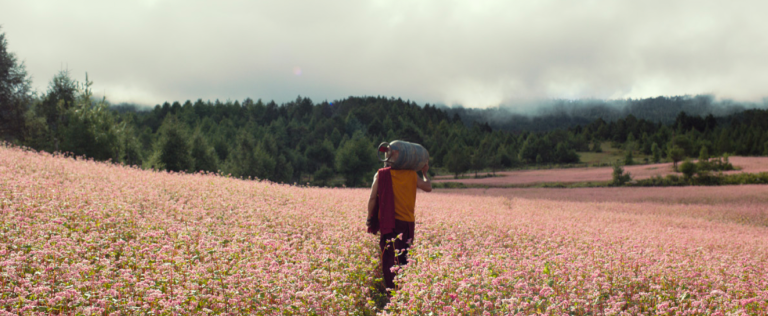The Monk and The Gun
The Rise of Bhutanese Cinema and the Film’s Bold Premise
Bhutanese cinema began its journey in 1989 with the release of Gasa Lamai Singye, a historical romance directed by Ugyen Wangdi. As the first feature film produced in the country, it laid the foundation for a small but growing film industry. Over the following decades, Bhutan’s cinema evolved gradually, shifting from folklore-based narratives to more contemporary themes. It wasn’t until recent years, however, that filmmakers began tackling deeper social issues and exploring complex identities. One such film making waves is The Monk and The Gun, a daring blend of drama, action, and spirituality.
Directed by Pawo Choyning Dorji, the film takes a unique approach to Bhutanese storytelling, focusing on the tensions between the country’s traditional Buddhist values and the modern challenges brought by violence, conflict, and the desire for change. This is Dorji’s second feature film, following his acclaimed debut Lunana: A Yak in the Classroom (2019), which became Bhutan’s first-ever Oscar-nominated film in the Best International Feature category. With The Monk and The Gun, Dorji continues his exploration of Bhutanese identity through cinematic narratives, pushing the envelope on both genre and subject matter while raising important questions about the nation’s future in a globalized world.

Exploring Themes of Peace, Violence and Identity
At the heart of The Monk and The Gun is a powerful exploration of the relationship between peace and violence. The film tells the story of a Buddhist monk who finds himself caught in a moral dilemma when he comes across a hidden firearm, symbolizing the clash between his pacifist beliefs and the harsh realities of the world around him. The gun represents not only the temptation of power but also the fragility of peace in a society traditionally defined by nonviolence. By juxtaposing spiritual philosophy with the material world’s turmoil, the film delves into Bhutan’s identity as a peaceful nation—both in terms of its political neutrality and its deeply ingrained Buddhist practices. As Bhutan modernizes and faces new global pressures, The Monk and The Gun asks whether the ideals of peace can survive in a world filled with uncertainty.

A Cinematic Reflection of Bhutan’s Changing Landscape
The Monk and The Gun is not only a film about personal and philosophical conflict but also a reflection of Bhutan’s ongoing transformation. As the country grapples with its rapidly modernizing society—marked by the influence of technology, urbanization, and external economic pressures—films like this challenge Bhutanese audiences to think critically about their heritage and future. The narrative and aesthetic choices—often blending elements of traditional Buddhist philosophy with contemporary cinematic techniques—reflect a growing desire to confront the realities of modern life while staying true to the country’s core values.
The film was selected as Bhutan’s official entry for the 96th Academy Awards and, like Lunana, it has garnered international praise for its thought-provoking themes and unique cultural lens. *The Monk and The Gun* is a striking commentary on the fragility of peace in a rapidly changing world, making it a critical and timely piece of Bhutanese cinema.
